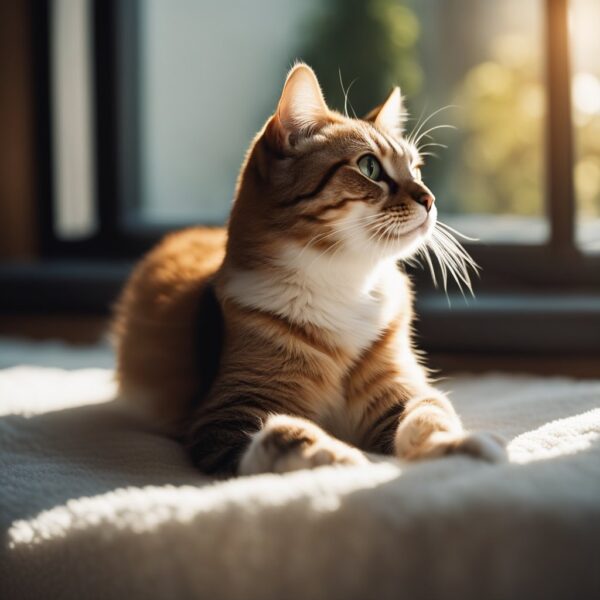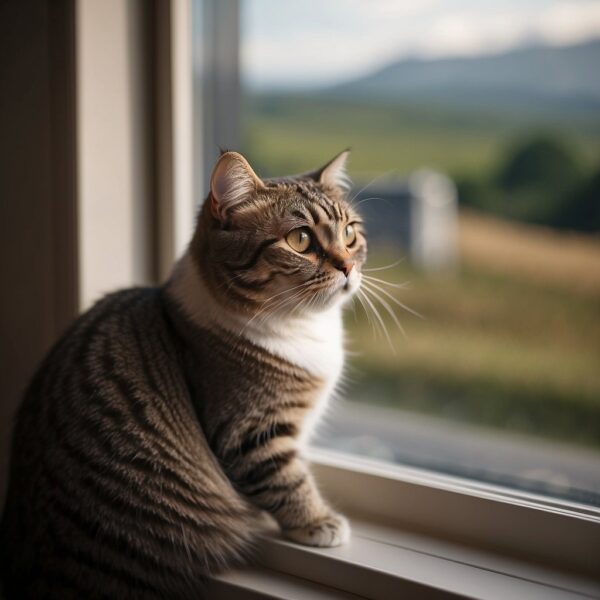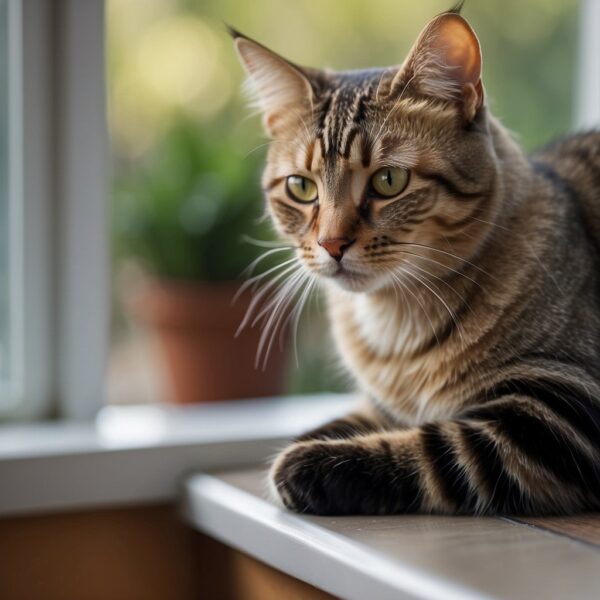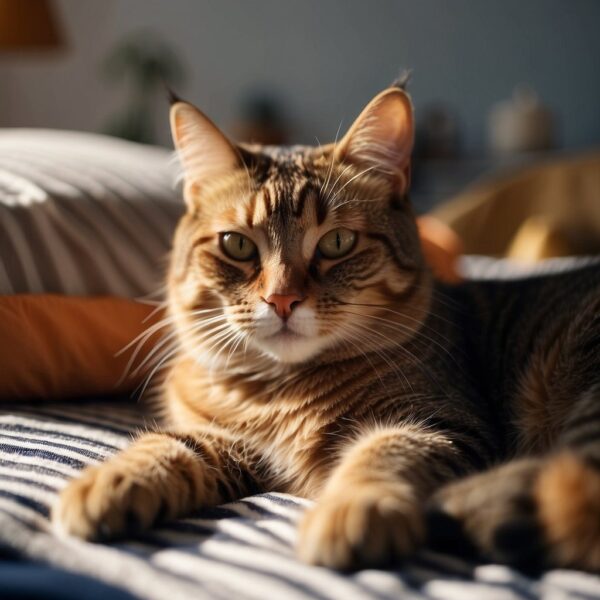
How Long Do Cats Live: Understanding the Factors That Affect Feline Longevity
Cats are favored companions in many households across the world, known for their playful antics, soothing purrs, and mysterious demeanor. Cat lifespan often becomes a point of curiosity for cat parents who wish to provide the best care throughout their feline’s life. Generally, domesticated cats live for an average of 12 to 15 years. However, with optimal care, it is not uncommon for cats to live into their late teens or early twenties. The lifespan of a cat can be influenced by a variety of factors, including breed, lifestyle, and general health care.
Understanding how long cats typically live provides valuable insight into the stages of feline development and the care they require as they age. It’s widely observed that indoor cats tend to live longer than their outdoor counterparts, mainly because they are not exposed to the same risks such as traffic, predators, or diseases. Cat breeds vary in their typical lifespans—with some like the Siamese or Maine Coon having specific average lifespans that differ from the general population. Keeping a cat well-fed, providing regular veterinary care, and ensuring daily interaction and exercise can potentially prolong their life.
Key Takeaways
- Domestic cats typically live between 12-15 years, with many reaching late teens or early twenties.
- Regular veterinary care, a safe living environment, and a healthy diet contribute to feline longevity.
- As cats age, proactive care and awareness of age-related health conditions are crucial for their well-being.

Understanding Cat Lifespan
Cats have a relatively long lifespan, with the average being 12 to 15 years. Multiple factors influence this lifespan, from genetics to living conditions.
Determinants of Cat Longevity
Factors such as diet, healthcare, environment, and genetics play crucial roles in the lifespan of a cat. Indoor cats generally live longer than outdoor cats due to reduced risks of accidents and disease. Purebred cats like Siamese and Maine Coon may have breed-specific health issues affecting longevity, while mixed-breed cats often benefit from genetic diversity.
Ageing Process in Cats
Cats advance through life stages: kitten, young adult, mature adult, and senior. Each stage has unique care and nutritional requirements. Senior cats may develop age-related health issues that need careful management to maintain their quality of life.
Cat Lifespan Compared to Humans
One human year is not equivalent to seven cat years. The first two years of a cat’s life equate to 24 human years, with each subsequent year translating to about four human years. This comparison helps cat parents understand their cats’ life stage in human terms.
Record-Holding Felines
According to Guinness World Records, the oldest documented cat lived to be 38 years. While this is exceptional, cases of cats reaching their 20s are not uncommon. These are often attributed to outstanding care and favorable genetics.
Breed-Specific Life Expectancy
Differences exist among cat breeds with Siamese and Burmese cats often reaching 15-20 years. In contrast, breeds like the Maine Coon generally have a shorter lifespan with an average of 10-13 years. Persian cats fall in a similar range, though individual lifespan can vary widely.
Facts about Cat lifespan and Aging
Cats don’t always show clear signs of aging until a more advanced age. Regular veterinary checkups are essential to identify and manage health issues effectively. The notion of “nine lives” is a myth; however, cats can often survive and heal from injuries that would be severe for other animals, thanks to their agility and cautious nature.

Factors Influencing cat Lifespan
Cat longevity is significantly impacted by various determinants, ranging from genetic predispositions to everyday lifestyle choices. To understand how these elements affect a cat’s lifespan, we explore each factor in detail.
Genetic Makeup and Breed
Certain breeds have an inherent predisposition to longer lifespans due to their genetic makeup. For example, mixed-breed cats generally live longer than purebreds. Specific breeds like Siamese and Manx may experience lifespans of 15 years or more.
Indoor vs. Outdoor Lifestyle
Indoor cats typically live longer than outdoor cats due to a controlled environment that minimizes exposure to risks such as predators and traffic. Outdoor cats frequently encounter more health hazards and tend to have a shorter average lifespan compared to their indoor counterparts.
Nutrition and Diet
A healthy diet is crucial for feline health. High-quality diets that are rich in protein and balanced in carbohydrates, vitamins, and minerals contribute to a robust health profile. Overfeeding and poor nutrition can lead to obesity and associated health issues.
Healthcare and Preventive Measures
Regular visits to the veterinarian for vaccinations and parasite prevention greatly increase a cat’s chance of a longer, healthier life. Preventative healthcare can assist in early detection and treatment of illnesses such as kidney disease, cancer, and hyperthyroidism.
Physical Activity and Weight Management
Maintaining an active lifestyle helps prevent obesity, a condition that can lead to serious health problems such as diabetes and joint issues. Weight management through exercise and a balanced diet is vital to prolonging a cat’s life.
Common Health Issues and Diseases
Cats can naturally develop health issues such as dental disease, kidney disease, or cancer. Awareness and management of these diseases are imperative for increasing longevity. Moreover, protection against diseases like FIV, feline leukemia, and rabies is essential.
Influence of Neutering or Spaying
Cats that have been neutered or spayed often live longer. This is partly because they are less likely to roam and get into accidents or fights, and also because it reduces the risk of certain diseases associated with the reproductive system.

Optimal Care for Enhancing cat Lifespan
Investing in comprehensive care is crucial for enhancing a cat’s life expectancy. Addressing key areas such as diet, healthcare, living conditions, and behavioral awareness forms the pillars of longevity.
Proper Nutrition and Diet
Cats require a diet rich in protein to support their carnivorous needs. A balanced diet should include:
- Proteins: Fundamental for growth and repair
- Fats: Essential fatty acids support cell function
- Carbohydrates: In smaller amounts for energy
- Vitamins and Minerals: Vital for immune health
Meal portions and content should be tailored to the cat’s age, weight, and health status.
Regular Veterinary Visits
Scheduled health checks with a veterinarian are paramount. These visits typically include:
- Vaccinations: To protect against diseases
- Parasite Prevention: Routine deworming and flea control
- Dental Care: To prevent gum diseases
Members of the American Association of Feline Practitioners provide guidelines on frequency and scope of exams.
Keeping Cats Indoors
Indoor cats often live longer due to lower risks of:
- Accidents
- Fights with other animals
- Exposure to disease
Providing a safe and enriched indoor environment can reduce outdoor-related risks significantly.
Disease Prevention and Health Maintenance
Preventing illness is more effective than treating it. A combination of the following is crucial:
- Nutrient-Rich Diet: To bolster the immune system
- Weight Management: To prevent obesity-related diseases
- Vaccinations: To immunize against common feline diseases
Mental Stimulation and Physical Activity
Mental and physical engagement is essential for a cat’s well-being. This includes:
- Playtime: Encouraging natural hunting behavior
- Toys: Offering a variety of toys to stimulate different types of play
- Environment: Creating a stimulating indoor environment with climbing trees and scratching posts
Observing Your Cat’s Behavior
Understanding normal behavior allows for the early detection of issues. Being attentive includes:
- Behavioral Changes: Noting shifts in appetite, activity levels, and social interaction
- Routine Monitoring: Keeping regular track of weight and litter box usage
- Communication with Vet: Reporting any concerning changes promptly
Close observation helps in recognizing signs of distress or disease for early intervention.
Recognizing and Managing Age-Related Conditions
As cats age, they may encounter various health challenges that require attentive care and management to maintain their quality of life. Understanding these conditions and the necessary adjustments in their care is essential for the wellbeing of a senior cat.
Chronic Diseases and Management
Senior cats are at an increased risk for chronic diseases such as kidney disease, diabetes, cancer, and hyperthyroidism. Regular veterinary check-ups are critical to diagnose and manage these illnesses. Treatments may involve medication, diet modification, and in some cases, surgery or other medical interventions.
Behavior and Mobility Changes
With age, changes in a cat’s behavior and mobility often occur. They may show less interest in play and become more sedentary. Recognizing signs of arthritis or mobility issues early on allows for timely adjustments to their lifestyle, such as providing softer bedding, ramps, and keeping necessities within easy reach.
Dental Health in Older Cats
Oral care is a key aspect of a senior cat’s health routine. Dental disease can lead to serious health issues if left untreated. Regular dental check-ups and cleanings, along with daily brushing, help maintain the health of their teeth and gums.
Vision and Hearing Impairment
Aging can affect a cat’s senses, including vision and hearing. Keeping the home environment consistent and safe can help a visually or hearing-impaired cat navigate their surroundings more effectively.
Senior Cat Care Considerations
Geriatric care focuses on maintaining comfort and catering to the special needs of a senior cat. This includes proper nutrition, keeping them at an ideal weight to prevent extra stress on aging joints, and engaging them in gentle, appropriate exercises to maintain muscle tone and joint mobility.
End-of-Life Care
It’s important to approach end-of-life care with compassion and concern for the cat’s quality of life. This includes palliative care options and making difficult decisions when necessary, always focusing on the cat’s comfort and dignity during their final days.
Helpful Resources for Cat Owners
For cat parents seeking reliable advice and information on feline care, there are numerous resources available. These include comprehensive online platforms, professional bodies specializing in feline health, and a variety of informative books and guides.
Professional Organizations and Associations
Organizations such as the American Association of Feline Practitioners (AAFP) serve as a valuable resource for cat owners. The AAFP provides guidelines on responsible pet ownership and the latest in feline medical research. Additionally, local veterinary associations often have resources and referrals for veterinarians who have a special interest in cats or are board-certified in feline practice.
Books and Guides about Cat Care and Cat Lifespan
For more detailed information, cat parents can turn to books and guides specifically focused on cat care. These often encompass comprehensive care tips, health concerns, and behavioral insights. Guardians seeking a deeper understanding of their feline companions can benefit from titles recommended by vets and other cat care professionals.

Frequently Asked Questions About How Long Cats Live
In this section, read about the determinants of feline longevity, the lifespan range for domestic cats, and specific lifespan considerations for different breeds and living conditions.
What factors influence the lifespan of indoor cats?
Indoor cats tend to live longer due to controlled environments that limit exposure to external hazards. Factors such as a balanced diet, regular veterinary care, and a safe, stress-free living environment play crucial roles in extending their lifespan.
Can an outdoor cat’s living conditions significantly affect its longevity?
Yes, an outdoor cat’s lifespan is greatly impacted by its living conditions. Outdoor cats face increased risks of injury, disease, and predation, which can substantially reduce their average life expectancy compared to indoor cats.
What is the typical lifespan range for domestic cats?
The typical lifespan range for a domestic cat is between 9 to 17 years. This can vary based on factors like breed, diet, healthcare, and whether they live indoors or outdoors.
How do you calculate a cat’s age in human years?
To calculate a cat’s age in human years, the first two years of a cat’s life equate to about 24 human years. Each subsequent year is equal to about 4 human years. This formula allows for an estimation of a cat’s age in human terms.
Can certain breeds of cats, like black cats, have different lifespans?
There is no scientific evidence to suggest that cat color, such as black, affects lifespan. However, specific breeds can have varying life expectancies due to genetic predispositions to certain health conditions.
At 14 years old, what can one expect for a cat’s remaining life expectancy?
At 14 years old, a cat may have a few more years remaining, with proper care and absence of serious health issues. The exact time is individual and varies by the cat’s overall health, living conditions, and whether it is an indoor or outdoor cat.